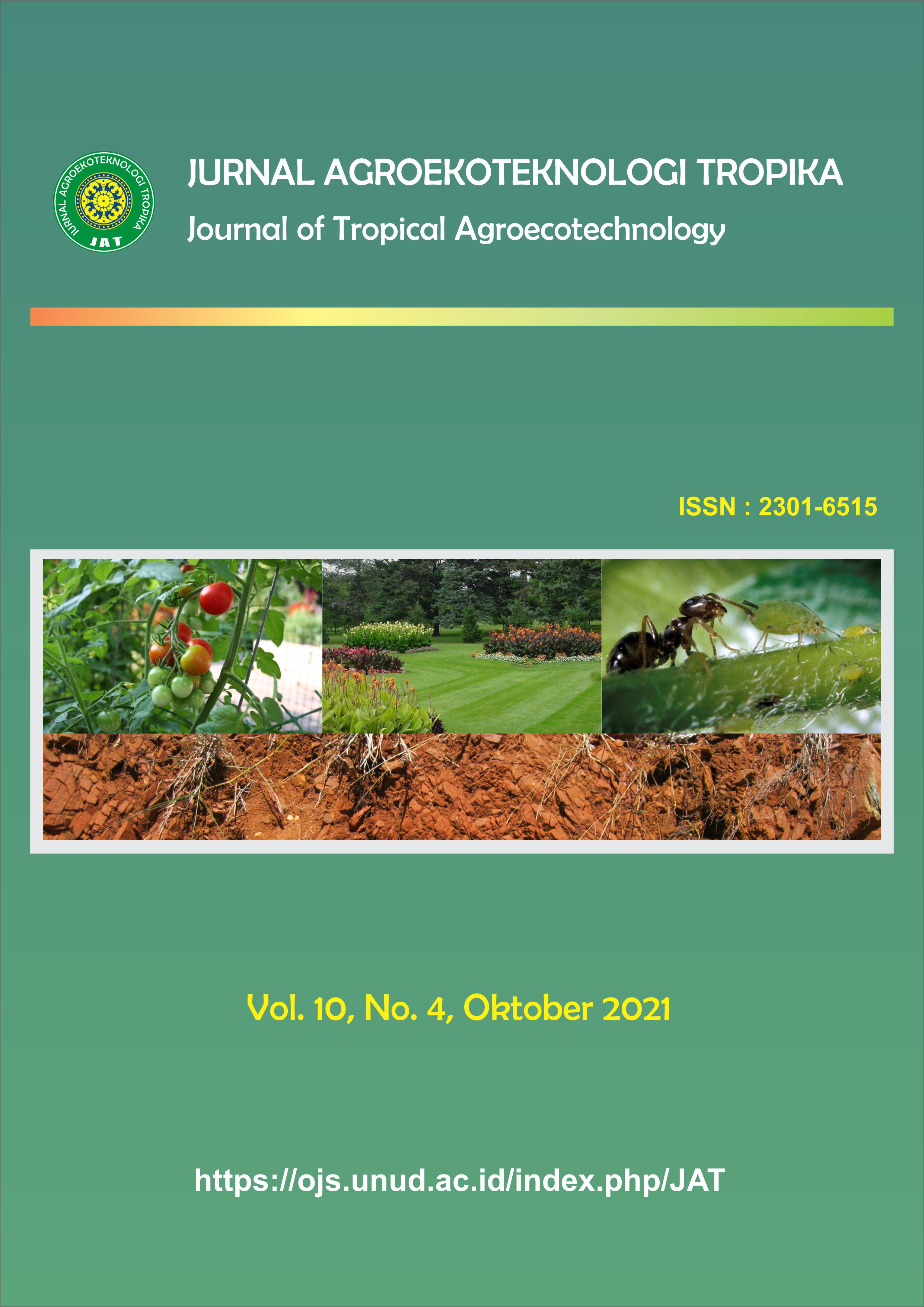Keragaan Agronomi dan Ketahanan Beberapa Varietas Unggul Padi (Oryza Sativa L.) terhadap Serangan Penyakit Hawar Daun Bakteri (Xanthomonas oryzae pv. oryzae) di Bali
Abstract
The Agronomic Performance and Resistance on Several Hight Yielding Varieties (Oryza sativa L.) to Bacterial Lesf Blight (Xanthomonas oryzae pv. oryzae) In Bali Province, Indonesia
The purpose of the test was to determine the level of bacterial leaf blight (BLB) in several high yielding varieties to obtain resistant varieties to replace Ciherang. The study was carried out by cultivating several high-yielding rice varieties in rice fields in Subak Dlod Sema, Badung from January to May 2020. The appropriate design was a 1-factor randomized block design with 5 treatments and was repeated 5 times. The superior varieties planted were Inpari 19, Inpari 40, Inpari blast, Situ Bagendit and Ciherang varieties for comparison. The incidence and severity of BLB were assesed in the field using the diagonal random sampling method by measuring the lenght of the lesions on the leaves. Measurement of plant samples as many as 10 clumps on a natural plot measuring 400 m2 diagonally. Measurement of BLB disease attack is carried out every 2 weeks starting from the age of the plant 2 weeks after planting (WAP) to 10 WAP. Analysis of the data using Analysis of Variance (ANOVA) and continued by testing the mean value of BNT at 5% level. To see the progression of the severity of BLB disease, it was analyzed by regression. The results of the study showed that 2 of the 4 varieties studied, namely Inpari 40 and Inpari blas were not attacked by BLB disease with an attack of 0.71% each while Inpari 19 and Situ Bagendit were attacked by HDB disease with a mild attack category, namely 2.67% and 2.97% compared to 3.20%. The increasing time of disease progression increased in Inpari 19 and Situ Bagendit with the regression equation y= 0.0464x²+3877x and y = 0.0275x2+0.38x compared to y = 0.0645x²+0.2935x. The higher the number of tillers/clumps, the number of filled grain/panicles and the number of grain/panicles can increase yield production. The production losses of Inpari 40 and Inpari blast were 0.71% each, so it can be said that the introduction of high yielding varieties (HYV) is feasible to be developed as a substitute for Ciherang in the use of resistant varieties to control BLB disease.



